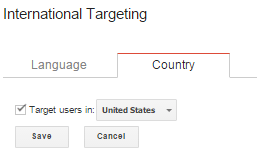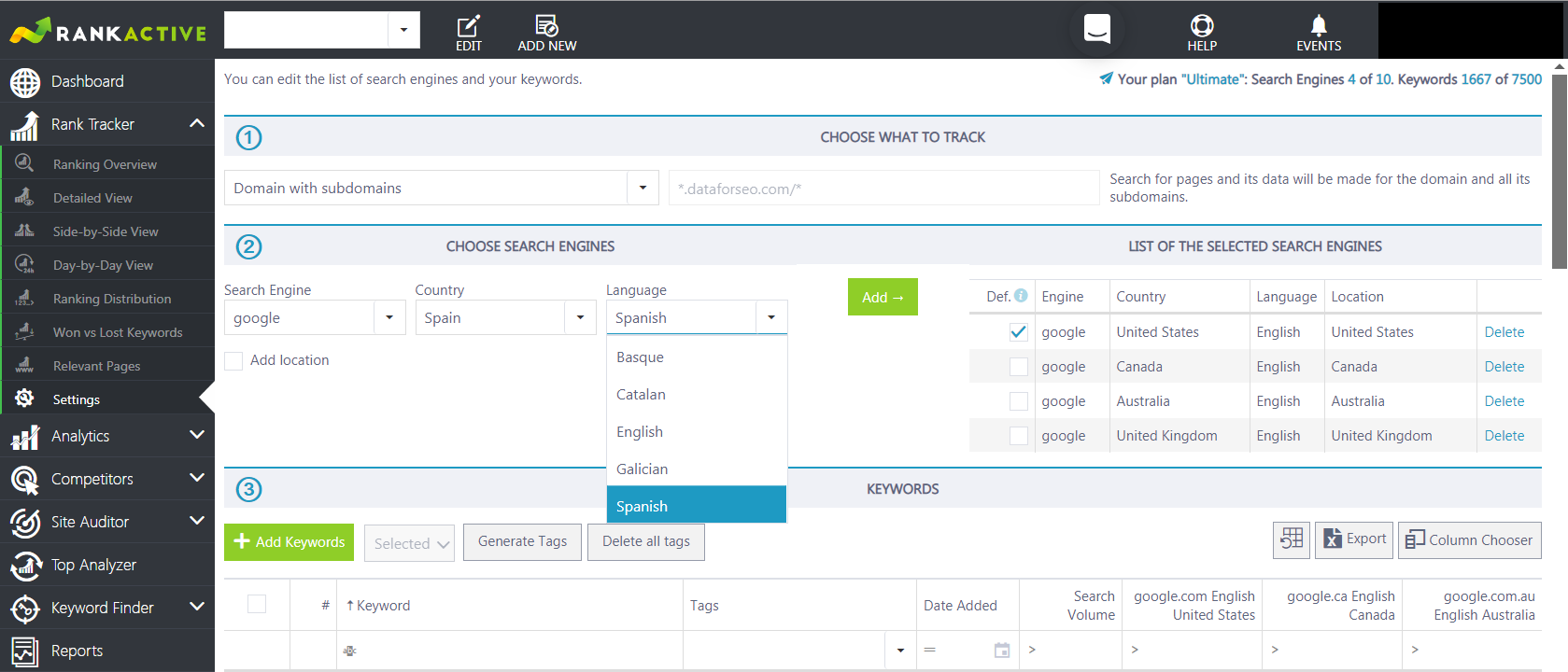Geolocation Redirect 101: How to Secure Your SEO Localization Efforts?
11 February 2019 Leave a comment ALL-HANDS SEO, LOCAL SEO
Google knows everything about the news, events, products, and services specific to a country or a region. The question is how to appear on the top of SERP where the target audience can find this information. Previously, we all thought that having a local server and using IP redirects are good ideas. But what about current trends in geolocation SEO?
Today, we’re reviewing the last Google announcements and guidelines that help SEO experts to target their local audiences. There are two main factors you should consider: a top-level domain and Search Console settings. But first things first, let’s find out why IP redirects are no longer relevant.
Does IP Location Still Matter? Google Has the Answer
How to deal with the traffic from different countries? This is a question for both international and local online businesses. After some consideration, SEO experts or entrepreneurs opt for redirects based on the IP location. For instance, users from France should be redirected to a page different from what the US audience sees. It turned out that Google has another opinion on this point.
John Mueller, Google’s Webmaster analyst, announced that IP redirects only confuse both users and bots: on the one hand, it’s about poor user experience, on the other hand, it damages Google indexing. How can Googlebot crawl every page on your website if they’re invisible for it because of redirection? There must be some other ways to handle SEO geotargeting, and we’re here today to learn more options.
So What to Use? Geolocation SEO According to Google
Let’s make it clear: your server can be placed anywhere in the world, and it won’t impact your Google rankings. Instead, John Mueller strongly recommends focusing on the ccTLD and/or Search Console settings. Let’s review these two methods and add some more suggested by the Webmasters guideline.
1. ccTLD
ccTLD, which means a “country-code top-level domain”, can be found after the last period in the website’s URL: www.example.ca or www.example.uk. Generally, Internet users are aware of what these letters mean and they can easily identify where it was registered or if its content is relevant for what they’re searching.
As we know, ccTLDs play one of the major roles in your SEO efforts and show Google crawlers that content was tailored for a certain country or region. The important thing to remember is that ccTLDs are focused on the user’s location but not the language he’s speaking. For instance, if a person speaks Russian but lives in Japan, he would more likely see websites with generic top-level domains or the .jp ccTLD.
So, how to use ccTLD wisely? Here are some recommendations for you:
- Take care of the link’s authority. You may have several websites with different TLDs, and you should build a strong authority level for each of them. The thing is, Google treats all of the websites separately, so if you have one major website, it doesn’t mean all other platforms have the same chances for high rankings.
- Prepare for some spending. If there are several locations you want to work on, purchasing a ccTLD is a costly business. It’s not a problem for big enterprises, but it is sometimes a sticking point for startups or medium-sized companies. If this is your situation, it may be better to focus on subdirectories and subdomains.
- Check if a local trademark or citizenship are required. In some cases, it’s not that easy to get a country-specific domain name. You must be affiliated with a country by having citizenship or a local trademark. Look through the list of ccTLDs with additional requirements (the “Notes” column) to check if you need more documentation.
2. Search Console Settings
What if you don’t need to target several countries and your business is focused only on one country? Naturally, ccTLDs are not the first thing coming to your mind. Local businesses want to be visible for a limited number of people, and Google’s Search Console can help you with that.
By providing Google with more information, you show Googlebots what users exactly should see the information from your website. Without further ado, let’s open Search Console.
1. Click on the toolbar and find the Search Traffic section there.
2. In the dropdown, you’ll see more options – pick the International Targeting subsection.
3. Next, you only have to choose the targeted country in the dropdown menu. You also have the Unlisted option if you want to rank globally.
Changing Search Console settings is also a great way to ensure you won’t be penalized by Google for the improper targeting. Now it’s all clear for both users and crawlers.
3. Subdomains and Subdirectories
There are several more ways to improve your geolocation SEO. As we previously mentioned, subdomains and subdirectories are less expensive for smaller companies. Plus, they’re recommended by Google too.
Both subdomains and subdirectories are based on the generic top-level domain (gTLD), but they have slightly different features.
What’s in common:
- No matter what way you choose, both subdomains and subdirectories are easy to arrange.
- They work well with the Search Console settings we’ve described above.
- Users may not recognize the location from the URL (they may confuse a location with the website’s language).
How they differ:
Subdomains (uk.example.com)
- Server location doesn’t matter.
- It’s easy to separate websites.
- Higher maintenance costs.
Subdirectories (example.com/uk/)
- The single server location is allowed.
- The website separation is more difficult.
- The host remains the same, so maintenance is cheaper.
4. Hreflang Tag
The hreflang tag is used by SEO experts to send a signal to the SE about the language used on a certain page. Unlike ccTLDs, this method has nothing to do with location, but you can reach out to your target audience that speaks French, for example.
This is where the hreflang tag can be placed (consider only one of these options):
- On-page markup
- HTTP header
- Sitemap
The hreflang attribute was first introduced by Google in 2011. Its mechanism is pretty self-explanatory: if a user conducts a search in English, he will see the English version of the site instead of Russian. In this case, you should add hreflang=”en”. Obviously, conversions can increase rather fast because your platform is understandable for readers.
There are some situations, however, when you have to adapt the content to a specific area. For instance, if you address the US audience, add a small clarification: hreflang=”en-us”. It will not only increase the customers’ loyalty but allow you to focus on the location-specific content (such as the info about currencies or culture events).
5. Sitemap
A sitemap is a great deal for a smarter Google search. It is a file where you put the data about the website’s content and show the relations between visual or text files. Not every video on your website is important, so having a sitemap helps to identify all the crucial information – in other words, where crawlers have to look first.
Besides that, sitemaps give an opportunity to tell Google bots if there are any language preferences for each URL of the website. For example, if one page will have English and French versions, this is how the final URLs will look like:
- www.example.com/english/page.html
- www.example.com/ukrainian/page.html
In the code, each URL must have its own element and two childs: and . Google provided a full guideline on this issue with examples.
How to Monitor Location-Specific URLs with RankActive
Now when you chose the way to localize your content, you should take care of a solid tracking tool. RankActive has you back and helps to customize your tracking efforts.
Open your RankActive account and click on the Rank Tracker section. Next, you will need the Settings subsection.
Rank Tracking Mode
First off, you can choose the tracking mode. RankActive will help you follow the progress for domains and subdomains, exact URLs, wildcards, etc. For this, pick the option from the dropdown:
- Domain with subdomains
- Domain without subdomains
- URL starts with, with subdomains
- URL starts with, without subdomains
- Exact URL
- URL wildcard, with subdomains
- URL wildcard, without subdomains
Country and Language
You have an opportunity to lay stress on a language and a location as well. Staying in the same subsection, choose a search engine option and then pick a country and a language. They are already set according to your own location by default, but you can change it. You can go further and specify a region and a location within it after clicking on the checkbox “Add location”.
We’ve already conducted our own research on the international SEO and reviewed the IBM case as an example. Check it out here.
Reach Customers with Targeted SEO Activities
No matter what language the customers speak or where they live, you can make them a part of your client’s community. Google provides several hints for you to make everything right. First of all, you should consider using ccTLDs or changing Search Console settings. All other options are up to you. You can choose a subdomain instead of a ccTLD if your budget is limited or use the hreflang attribute focusing on the user’s language.
RankActive will be here waiting for you to make the final decision, and then, we’ll help you track your success considering your preferences of the tracking mode, country, and language.
Tags: geolocation SEO, local seo, Search Console
Like this article? There’s more where that came from.
- 4 Steps Guide to Using Google Analytics for Social Media
- Setting up of the trigger to be notified when your ETV reaches the goal
- How to Get Out of Google Sandbox and Do It Quickly?
- Your Ultimate Guide to SEO Reporting with RankActive
- Your 7-Step Guide to Increasing Page Speed
- How to Do SEO Competitor Analysis? Your Checklist for 2019






